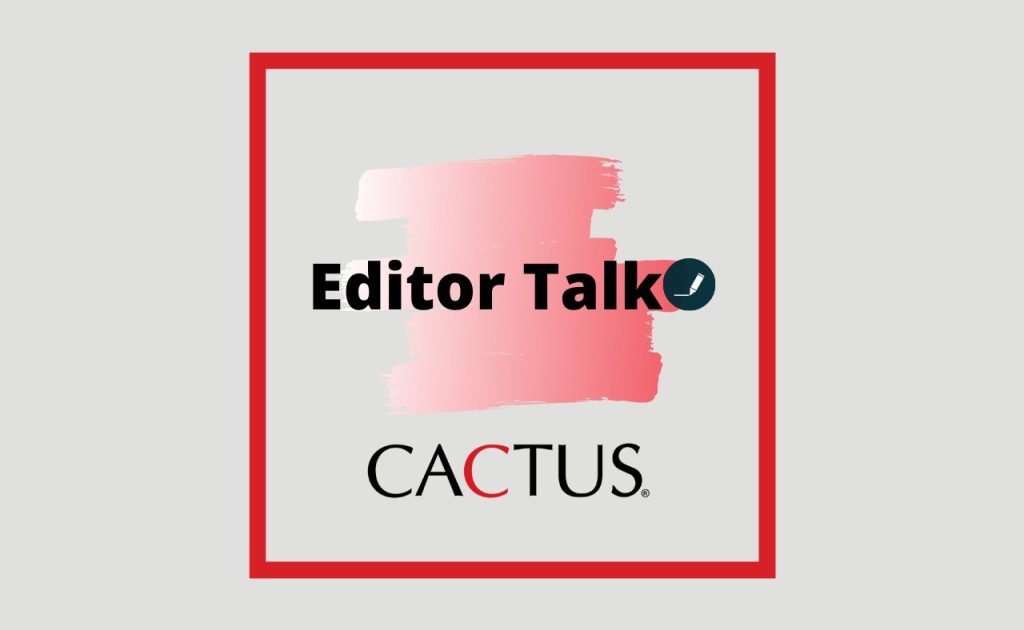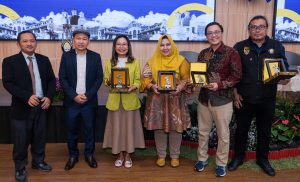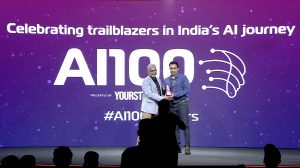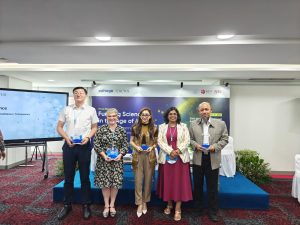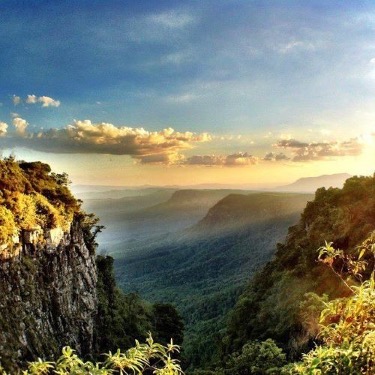
Sanibonani, Molo, Hallo, Thobela, Dumelang, Lumela, Abusheni, Sanibona, Avuwani, Salibonani, and Hello. I am Hannelie, and I greet you. I am from the country of diversity, the home of titanic mountains, vast plains, and bustling cities; the Rainbow Nation. Our anthem speaks first of God blessing the children of Africa, and then of our deep oceans, our everlasting mountains, and our call to come together. In a world made small by technology and our inherent interconnectedness, South Africa will always be my home. I am, in my bones, a child of Africa.
On May 4, 1978, the South African army of apartheid-era South Africa executed Operation Reindeer, one of the largest and most devastating assaults on SWAPO during the Border War between South Africa and Angola. On the same day, a baby girl was born in One Military Hospital, Pretoria, to an absent-at-the-time army captain and his courageous wife. This little girl was the youngest of four daughters, and unplanned. Yet, she was raised in a house overflowing with love and support, if not very many worldly possessions. Today, almost 43 years later, that same little girl is writing this article to an international audience.
After spending most of my childhood in then South West Africa (now Namibia), we moved back to South Africa when I was almost 13 years old. While we all struggled to adapt, I think I had it easier than my three older sisters. Unbeknownst to me, my high school career would be some of the most tumulus—and famous—years in our history. In my standard six year, 1992, a national referendum was held and apartheid was officially abolished. At sixteen, I watched as Nelson Mandela was inaugurated on April 27, 1994, as the first president of color in the history of South Africa. But to a teenager, all of this seemed… unimportant. My school subjects, music career, sport, and friends were of much more importance! Even though I performed well at school, excelling at music and languages, I could unfortunately not continue my education, as there was just no money. As mentioned earlier, my father was a career soldier, retired early as colonel. My mom never worked, as she suffered from macular degeneration, which deteriorated her eyesight to virtually nothing by the time I was in high school. Nearing the end of my school career, my future weighed heavily on me. Until I met my future.
On the November 15, 1996, I met a guy in a local pub. What a cliché, right? At three o’clock the next morning, after we spent the whole night talking, he informed me, quite seriously, that he was going to marry me; I laughed, of course. Long story short, on the November 15, 2005 (exactly 11 years later) our only son was born in the Knysna Private Hospital. October of this year marks 23 years of thick and thin and sickness and health.
To keep it short, I’ll summarize some trivia on me: Although I’ve been an English editor for many years, my home language is Afrikaans. I have rather severe ADHD (as does my son) and was only diagnosed at the age of 38. The things I love most are my family, reading, a good red wine, running with my dog, amateur photography, and playing the piano (I am a trained pianist but did not follow it as a career). I completed my tertiary education when I was 8 months pregnant with my son. My favorite food is chocolate and my favorite book is the Lord of the Rings. My pet hates are intolerance, bullying, and people who are generally unkind. Also, slow technology, bumping my head, doing dishes, and raisins in food.😊
But enough about me. I agreed to write this article in the hope of telling people about my country from a different angle than tourism advertisements or news reports. As most editors know, freelancing for CACTUS provides a freedom that is rarely found in workplaces, particularly in South Africa. Up until almost four years ago, I had always been employed full-time in an office environment. For the last three years, however, I have enjoyed the freedom, the professionalism, and the appreciation that comes with freelancing for CACTUS. Having this while living in a city would already be amazing; having this while living in Knysna is absolutely indescribable.
The town of Knysna (an indigenous Khoisan word for “place of woods/ferns”) came into being as a woodcutters village in the late 1700s. The region where our town is nestled in its little valley is called the Garden Route for good reason. From Witsand (White Sand) in the Western Cape to Storms River in the Eastern Cape, the area offers indigenous forests and lakes galore, running all along an absolutely magnificent coastline. The opportunities to explore nature are myriad, by foot, water, or car, we are often out and about hiking, rowing, or diving. The Garden Route, I do believe, is one of the shiniest jewels in South Africa’s crown. But let me take you on a quick tour of the rest of my country!

Other jewels in the crown of my country include, of course, Table Mountain. One of the seven natural wonders of the world, this flat-topped mountain is a geological oddity that attracts global visitors. Moving north, we have to mention the Northern Cape that transforms into a wonderland of flowers once a year. Next, we visit the Kglalagadi trans-frontier park, a combined conservation effort between South Africa, Botswana, and Namibia. The Kruger National Park, of course, should never be neglected. At around two million hectares (roughly the size of Israel), it is home to around 150 mammal species alone. Next, we head south again to experience the majesty of the Drakensberg (or “Dragon Mountain”) that stretches a thousand kilometers along the eastern escarpment; here, we pause to look out God’s Window before moving on. Last, we head off to Kwazulu Natal. In addition to more wildlife parks, here you will find cultural spots that represent all of the nations living in South Africa, from Anglo Boer War sites to Zulu villages.

Although there are many more places to visit in our little imaginary tour, those are the rough highlights. Sadly, I cannot say that I’ve visited every single one of them. One day, perhaps.
As with most countries, though, no one can deny that South Africa, despite its natural beauty, its extraordinary people, and its rich heritage, has its problems. Despite leaving apartheid behind in the early nineties, racism still abounds in some levels of society. The income gap grows by the day as the economy worsens, and violent crime, poor education, unemployment, and empty promises plague the poorest of the poor, while corruption runs rampant in every single level of government.
Despite these issues, I still believe in the people of this country. I have spoken often to returning visitors and people who have immigrated to South Africa from developed countries such as the United States. Their answers to my question on why they want to live here always touch upon the natural beauty, but inevitably land on the people. I have heard the people of South Africa described as many things, none of them negative. Friendly, open, hardworking, honest, inclusive, helpful, and funny. This is why I believe that the character of our country lies not in its mountains or its oceans, but in its people.

Our people, no matter what color, creed, or language, are generally laid-back, happy, and optimistic; and even though we differ, we share so many things. We “braai” or “shishanyama” (barbeque in Afrikaans/Zulu); we drink beer, be it Castle Lager or Umkomboti; we invite people into our homes (and we don’t let them leave without eating or drinking something); we laugh at ourselves and the government, and we use unique words across all languages that only South Africans truly understand. We are universally proud of us; our country, our history, and our heritage. Things we are proud of include many famous individuals, from entertainment personalities such as Charlize Theron, entrepreneurs like Elon Musk, and political activists like Mahatma Gandhi, to heart surgeon Chris Barnard and, of course, two Nobel prize winners who lived on the same street, Nelson Mandela and Archbishop Desmond Tutu. Inventions that call SA home are the CAT scan, the Kreepy Krauly, ocean wall “dolosse,” and the first method of making fuel from coal. I could carry on, but I suspect you get the picture.
If you had to ask me whether I would leave South Africa if given the chance, I think it would depend on so many things. It is imperfect in so many ways, but in the end, this is home. I hope that my ramblings offer you some insight and that you have decided that you may want to visit one day. To conclude, I will share a short list of South Africanisms everyone should know when visiting South Africa.
Howzit?: A casual greeting used by most Saffers on a daily basis, meaning “how are you doing?”
Ag man!: An exclamation of dismay using the hard “G” in the back of the throat. Most English speakers from other countries cannot do this.
Aikona! : Definitely not/Not on your life!
Eish…: An expression of dismay, confusion, or sympathy, depending on the situation.
Biltong: A South African delicacy of salted and dried meat strips. Akin to American jerky but very different and absolutely delicious!
Bakkie: A vehicle called a pickup in the US and a Ute in Australia. I drive a Ford Ranger myself.
Just now, Now, and Now-now: These are indeterminate lengths of time that can be either five minutes or three weeks. There is no way to tell!
Shame…: South Africans use this word in an entirely different way to the rest of the world. It is used to indicate sympathy (Ag shame, man!) or to refer to a cute baby or puppy (ag shame, he’s so cute!).
Lekker: There is simply no English word or phrase for this expression. It means great, fantastic, delicious, awesome, going well, and everything in between. Learn this word before you visit; it will open many doors. We love nothing more than someone pronouncing our favorite word correctly!
Bliksem!: This is seen as a cuss word by some and at the very least a word not used in polite company. It has connotations to lightning striking and can be used to say that you plan to hit/punch someone (Stop it, I will bliksem you) or to express anything from disbelief (Good bliksem, that’s a large lion!) to describing a person (Yeah, watch out for him, he’s a bliksem).
And that is me and my country in a nutshell. I’ve loved writing this, as it reminded me why I adore this country with my whole heart. I wish you well: Goodbye, Totsiens, and Hamba kahle.
About the author
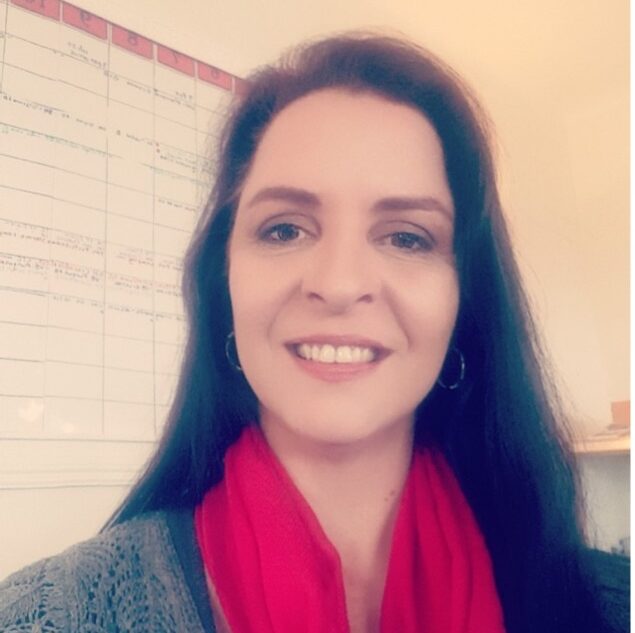
Hannelie Lohann is a freelance editor with Cactus Communications.
Editor Talk is a new series where freelance and contractual editors share stories about their life and give you a glimpse into the freelance/contractual world. To explore freelance/contractual opportunities with CACTUS, visit here.


